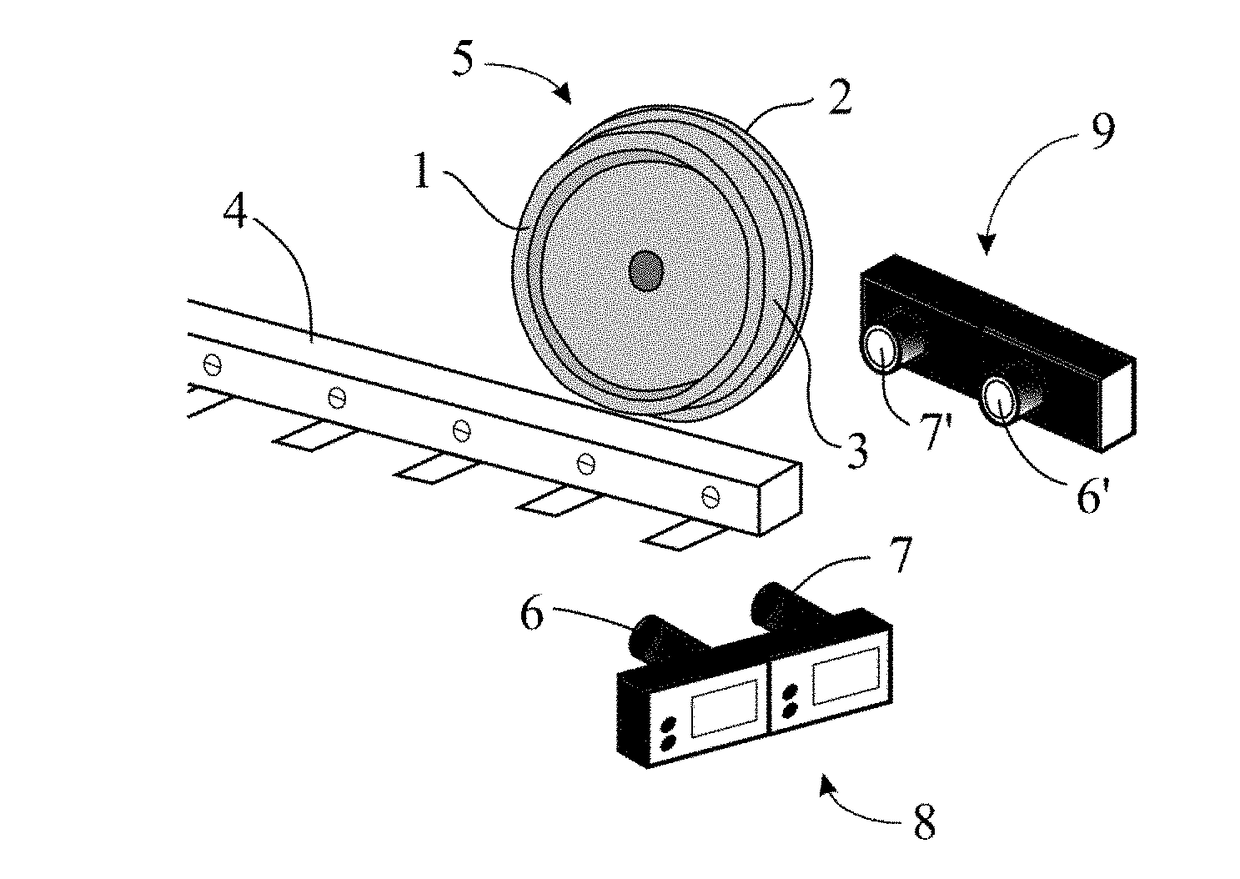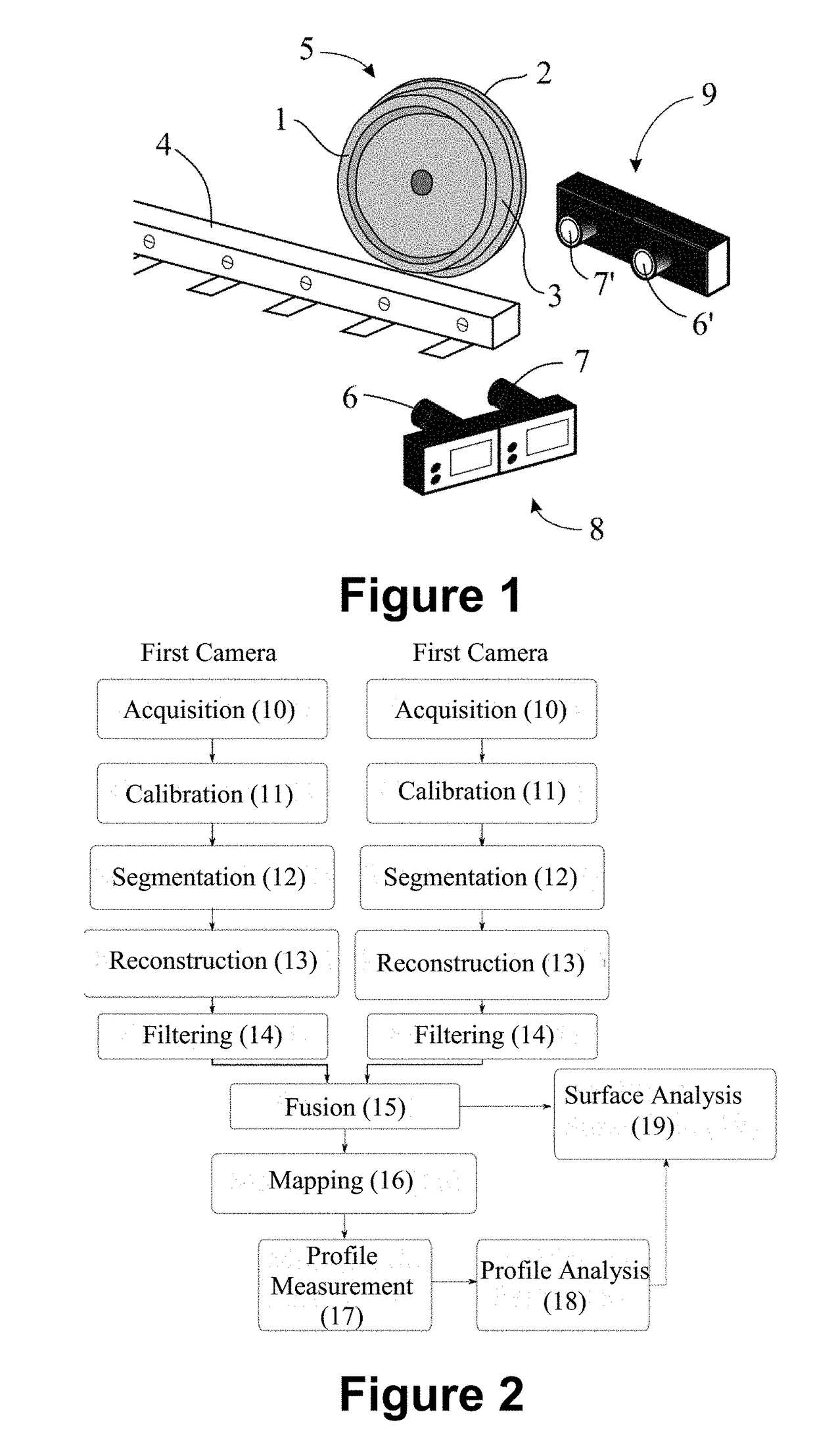Railway wheels monitoring system and method
a technology for monitoring systems and railway wheels, applied in the direction of instruments, electrical equipment, image data processing, etc., can solve the problems of train losing contact with these elements, severe damage, and potentially affecting the logistics contract, and achieve the effect of suffering wear
- Summary
- Abstract
- Description
- Claims
- Application Information
AI Technical Summary
Benefits of technology
Problems solved by technology
Method used
Image
Examples
Embodiment Construction
[0043]The present invention describes a system and method for the monitoring of railway wheels 5. Such monitoring makes it possible to visualize and analyze both the wheel profile 5 and its surface 3.
[0044]In addition, monitoring also allows analyzing the entire profile and surface 3 of the railway wheels 5, comparing it with an ideal wheel model to measure its effective wear.
[0045]Monitoring can be divided into three fundamental steps: measuring the profile 17 of the wheel 5; analyzing the profile 18 of the wheel 5; and analyzing the surface 19 of wheel 5.
[0046]The first aspect relates to the provision of measurements relative to the geometry of the wheel 5. Regarding the analysis of the profile 18 of the wheel 5, in this step its geometry is analyzed along its entire profile, and this profile is generated only with two dimensions (2D).
[0047]The analysis of the surface 19 of the wheel 5 involves extending this process along the profile of the wheel 5 (2D) to a small region of the s...
PUM
 Login to View More
Login to View More Abstract
Description
Claims
Application Information
 Login to View More
Login to View More - R&D
- Intellectual Property
- Life Sciences
- Materials
- Tech Scout
- Unparalleled Data Quality
- Higher Quality Content
- 60% Fewer Hallucinations
Browse by: Latest US Patents, China's latest patents, Technical Efficacy Thesaurus, Application Domain, Technology Topic, Popular Technical Reports.
© 2025 PatSnap. All rights reserved.Legal|Privacy policy|Modern Slavery Act Transparency Statement|Sitemap|About US| Contact US: help@patsnap.com



